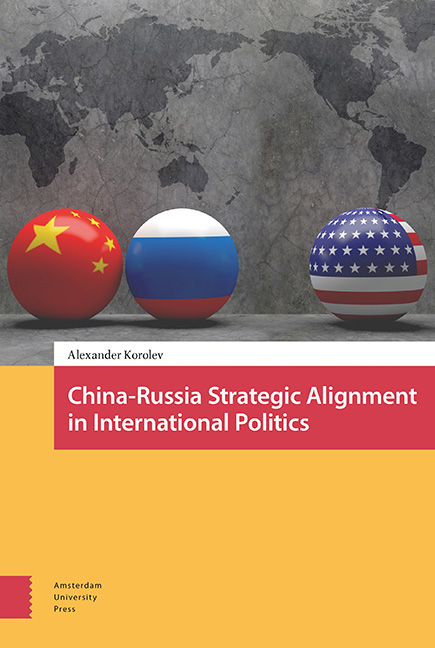Book contents
- Frontmatter
- Dedication
- Table of Contents
- List of Figures and Tables
- Acknowledgments
- 1 Introduction: The Elusive Nature of China–Russia Relations and the Need for Theory
- 2 The Ordinal Model of Strategic Alignment
- 3 Military Cooperation: Approaching Alliance
- 4 Alignment Incentives: The Three Balances
- 5 Robustness Check: Economy and Diplomacy
- 6 Comparative Mapping: US–India and China–Russia Alignments
- 7 Conclusion: Empirical Findings and Theoretical Implications
- Index
4 - Alignment Incentives: The Three Balances
Published online by Cambridge University Press: 07 October 2022
- Frontmatter
- Dedication
- Table of Contents
- List of Figures and Tables
- Acknowledgments
- 1 Introduction: The Elusive Nature of China–Russia Relations and the Need for Theory
- 2 The Ordinal Model of Strategic Alignment
- 3 Military Cooperation: Approaching Alliance
- 4 Alignment Incentives: The Three Balances
- 5 Robustness Check: Economy and Diplomacy
- 6 Comparative Mapping: US–India and China–Russia Alignments
- 7 Conclusion: Empirical Findings and Theoretical Implications
- Index
Summary
Abstract
This chapter is the empirical examination of the second cluster of the alignment framework developed in Chapter 2 – the incentives for alignment formation as expressed by the balances of power, threat, and interests. It explores the changes within each “balance” as well as in the relationship between them to explain China–Russia alignment. The chapter examines the relative power dynamics within the contemporary international system and the perceptions of external threats and interests in China and Russia. It shows convergences between China and Russia in terms of how they view the evolving international order and demonstrates the gradually growing interconnectedness between the three balances in the context of China–Russia relations since the end of the Cold War. There are reasons to expect a further strengthening of the bilateral alignment.
Keywords: Russia–China alignment, balance of power, balance of threat, balance of interests
According to the analytical framework developed in Chapter 2, applying the “three balances” approach to explain the dynamics of China–Russia alignment requires exploring three factors for alignment formation: 1) the relative material capabilities of the great powers and the impact of a potential alliance on the balance of power within the international system; 2) the compatibility of the potential allies’ views of external threats; 3) the potential allies’ interests in revising the international status quo. To better explain the alignment trajectory over a period of time, it is also essential to understand the interrelationship between the three balances across the stages of alignment formation, identified in Chapter 3. Since the three balances are not unrelated to each other, this raises the question of whether there is a convergence or divergence between them in terms of incentivizing China–Russia alignment.
Balance of power: the shift in the distribution of capabilities and its implications
As highlighted in Chapter 2, the empirical assessment of the balance of power as a factor of alignment formation requires exploring two factors. The first is the systemic power distribution itself, and the second is whether a potential China–Russia alliance can mount a challenge to the dominant superpower significant enough to for effective balancing.
- Type
- Chapter
- Information
- China-Russia Strategic Alignment in International Politics , pp. 99 - 128Publisher: Amsterdam University PressPrint publication year: 2022



